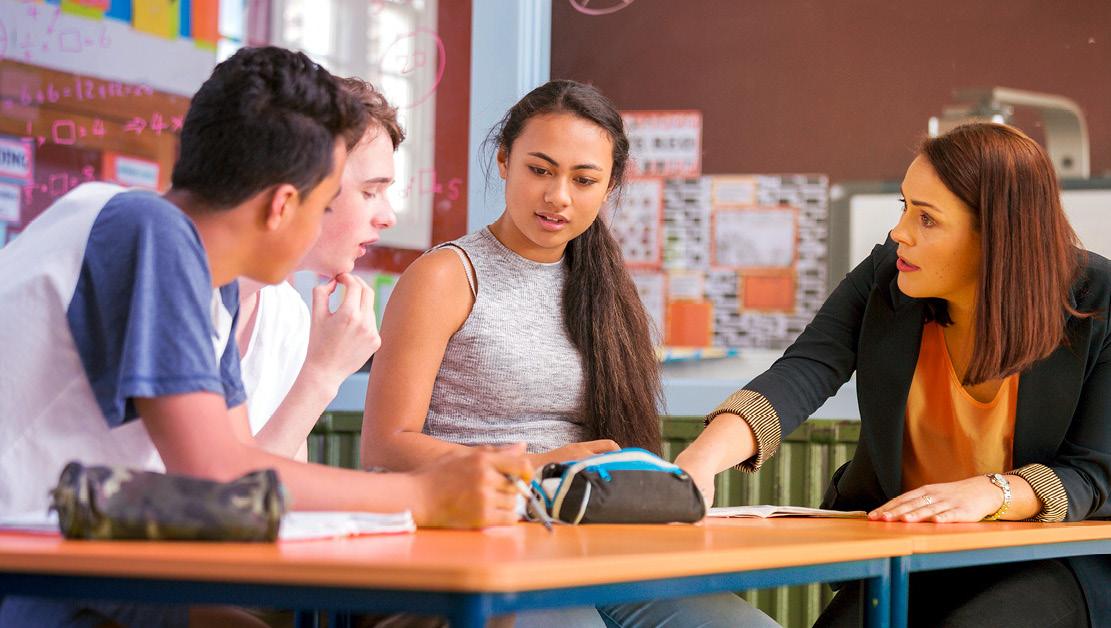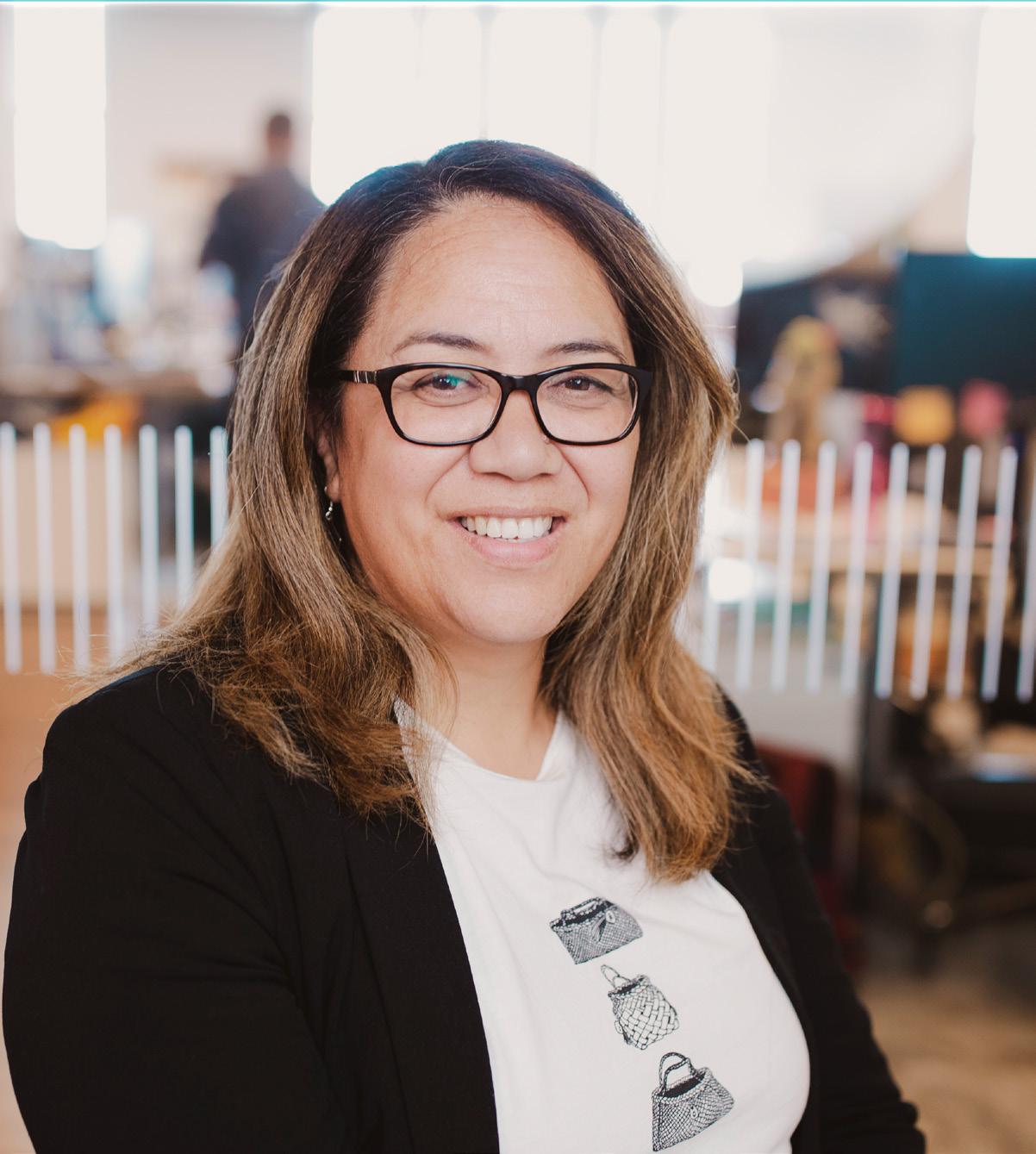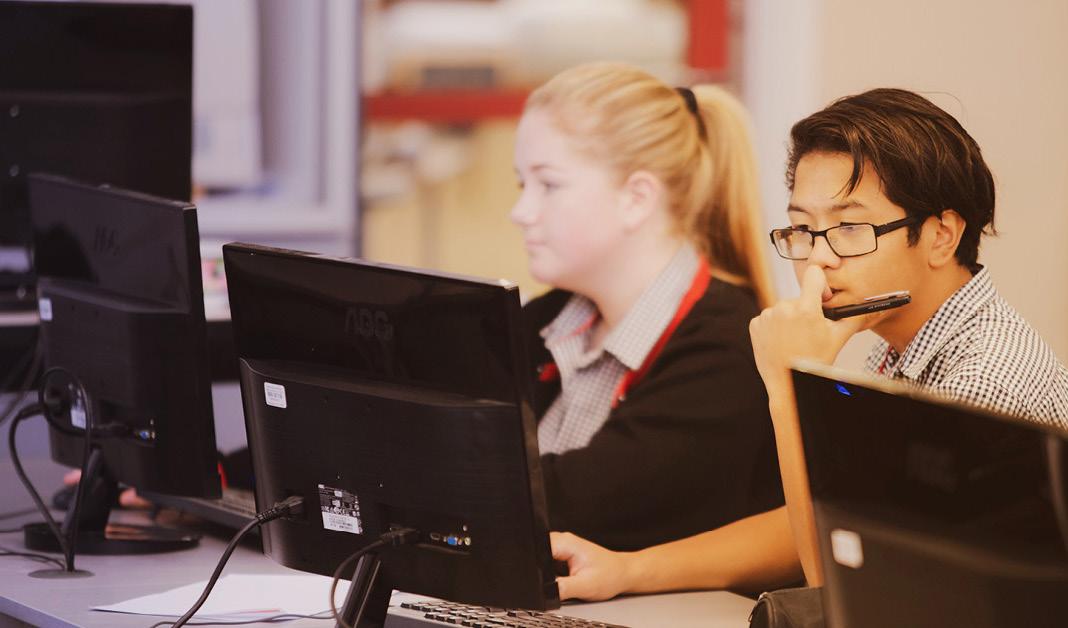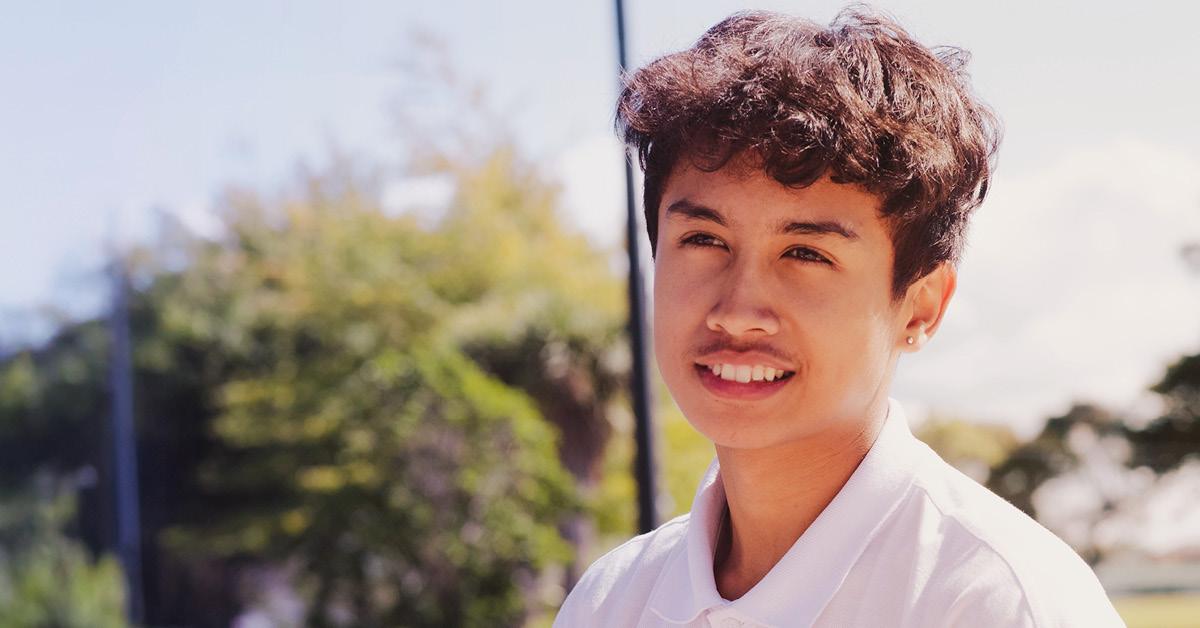
7 minute read
Building financial capability through maths and mātauranga Māori
Mathematics lessons at Marcellin College are helping students see the real-world relevance of numbers through financial literacy, while a kaupapa Māori approach to money is empowering rangatahi across Aotearoa.
With financial literacy now part of the refreshed mathematics curriculum, Su Min Ahn, Mathematics and Statistics faculty head at Marcellin College, saw an ideal opportunity to support ākonga in developing foundational money knowledge as part of their everyday maths learning.
“Sorted in Schools offers a great range of resources that not only support the curriculum but are also accessible and engaging. The programme supports both kaiako and ākonga to explore financial literacy in fun, interactive and meaningful ways.
“It’s a powerful tool to equip young people with the skills they need to make confident financial decisions in their lives,” says Su Min.
Students at Marcellin College respond positively when they realise maths can help them make sense of money, spending and life decisions.
“Students realise that maths is so relevant to their daily lives, which is often a powerful moment for students. Concepts like percentages, interest rates and budgeting suddenly feel more useful and empowering,” she says.
“They begin to see how these skills help them calculate things like tax, profit or loan repayments – things they or their whānau may already encounter. This practical application makes maths feel more accessible and gives students a sense of agency over their financial futures.”
Connecting the dots
One lightbulb moment that stood out to Su Min came from a Year 9 class exploring basic money concepts. After a discussion on income, savings, spending, debt and budgeting, one student shared: “Make sure you save your money in a reliable, trusted account like KiwiSaver. Portion out your income, what you’re spending, paying in taxes, and any loan repayments, and aim to save at least 20 percent.”
For a first lesson, Su Min says this level of reflection was incredible and showed that they were already beginning to connect the concepts to real-life decision making and thinking critically about how to apply them.
“This structure supports learners to learn and apply financial concepts while making space for discussion and reflection. It supports the direction of the curriculum by centring ākonga as active learners and making learning culturally and contextually relevant.”

Learning hits home
Differentiating the learning to meet the diverse experiences of students is one of the challenges Su Min has encountered.
“One challenge is the wide range of financial experiences and prior knowledge students bring to the classroom. Some ākonga may already have a bank account or contribute to family finances, while others are completely new to the concepts.
“Differentiating the learning and finding entry points for all learners can be complex. I’ve navigated this by using students’ lived experiences and encouraging them to share examples.
Creating a safe, inclusive space for these conversations has been key.”
By validating diverse home experiences, Su Min ensures that learning about money is meaningful for all.
“I think this is one of the most powerful aspects of learning about money; everyone brings unique experiences shaped by their family and cultural backgrounds. Encouraging students to share their own stories and knowledge not only validates their experiences but also helps build strong, meaningful connections between the classroom and home.”
The impact of financial literacy lessons often extends beyond the classroom. After one financial literacy lesson, a student said, “This was the best and most beneficial learning experience I’ve ever had!”
Su Min says this was a powerful reminder of how relevant and engaging this learning can be. Beyond the classroom, she has seen students start conversations at home about budgeting and saving.
“In one lesson, I gave students a takeaway task to discuss their household’s weekly expenses with their parents or whānau and explore ways they might contribute to reducing costs. Some came back with ideas like saving power, cooking more at home, or helping compare phone or internet plans.
“These real-life activities show that financial literacy isn’t just something we learn in class; it’s helping students have real conversations and make changes in their everyday lives.”

An everyday impact
Teaching this content has also influenced Su Min’s personal life.
“As an immigrant myself, learning financial literacy and becoming more confident with money in Aotearoa has been incredibly important, not just for me, but for my whānau as well.”
Su Min adds that teaching this content has made her more aware of the value of passing this knowledge on to her own children, helping them become more financially independent and confident in managing money from an early age.
Su Min’s advice for other schools is simple: “One of the greatest strengths of financial literacy education is its adaptability.”
She also explains how it can be meaningfully embedded across a wide range of learning areas.
“When we use authentic contexts and real-life scenarios, students are more likely to engage, reflect and make meaningful connections between their learning and their everyday lives.”
A kaupapa Māori approach to money
For Erin Thompson, Kaihautū | Director of Māori and Learning at Sorted in Schools Te Ara Ahunga Ora, building financial capability for tamariki and rangatahi Māori is essential.
“Equipping rangatahi with the tools to make good decisions about pūtea (money) is essential and should be accessible to all if we want to ensure that they have a better financial future.
“Providing financial education in the context that allows rangatahi Māori to see themselves, their worldview, is therefore essential.”
Te whai hua – kia ora, Sorted in Schools’ kaupapa Māori programme, has been embraced across kura and Māorimedium settings. It’s currently used in 80 percent of kura and Māori medium settings (Years 9–13) across Aotearoa.
The programme has been designed by kaiako and kura from an ao Māori perspective, using tikanga Māori and traditional narratives to underpin the learning.
Erin explains that the programme allows rangatahi and whānau to see themselves in contextualised resources that encourage rangatahi to draw on their own whakapapa links, traditional stories and cultural practices to understand financial systems and how to make decisions about pūtea.
“For example, students can have discussions about the meaning and purpose of koha, through to sustainable living and investing in papakāinga, and what that can mean from an individual and collective perspective.”
The impact of the programme extends to whānau and across generations. An exceptional example at one particular kura is where the tuakana (Years 12–13) facilitated lessons and projects for their teina (Years 2–4) to learn more about pūtea.
“This was a great opportunity for tamariki to apply their understanding on a practical level and for whānau to participate and have discussions about pūtea.
“We have also hosted whānau nights where kura whānau learn more about their own financial capability and strategies to help their decision-making process with pūtea.”
For Erin, success for Māori learners means they are empowered to make good decisions, grounded in their own worldviews.
“Success would be where Māori learners are equipped with the mātauranga to make good decisions both as individuals and as a collective.
“In particular, that they can draw from their own worldview to contextualise their learning and broaden their understanding to make decisions about pūtea that have the potential for long-term impact and intergenerational change.”

Sorted in Schools offers free financial capability resources designed for secondary schools, including:
Te whai hua – kia ora (kaupapa Māori resources)
Bitesize modules on trending financial topics
Lesson plans, student activities, and real-life scenarios.










